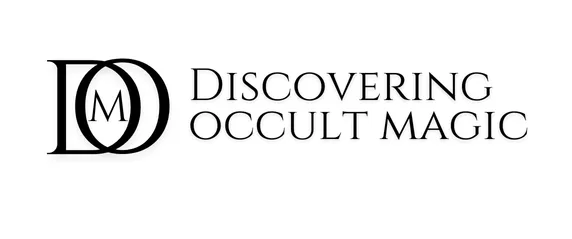Introduction
At first glance, the Lesser Banishing Ritual of the Pentagram (LBRP) might sound intimidating, perhaps even sinister. The name alone evokes dark imagery thanks to decades of misinformation. But in truth, this foundational ritual is anything but demonic. Far from Hollywood horror tropes, the LBRP is a spiritual exercise designed to cleanse, protect, and align the practitioner with higher energies. In this post, we’ll demystify the pentagram’s history, explore the origins of the LBRP within the Hermetic Order of the Golden Dawn, break down each step of the ritual, and explain why it remains a cornerstone of modern ceremonial magic.
Understanding the Pentagram: Symbol of Spirit and Balance
Before diving into the ritual itself, it helps to understand the symbol at its heart: the pentagram. One of humanity’s oldest spiritual icons, the pentagram has been used across civilisations for thousands of years. It first appeared in Sumerian cuneiform around 3000 BCE, possibly representing movement, direction, or divine power.
By 500 BCE, Pythagoras and his followers in ancient Greece embraced the pentagram as a symbol of mathematical perfection, embodying the Golden Ratio and the harmony of nature. Early Christians even used it to represent the five wounds of Christ, a symbol of faith, not fear. During the medieval period, the pentagram featured prominently in magical grimoires, alchemical manuscripts, and protective rites.
In ceremonial magic and modern occultism, from the Golden Dawn to Thelema and Wicca, the pentagram symbolises the microcosm of the human being and the five classical elements: earth, air, fire, water, and spirit. When enclosed in a circle (known as a pentacle), it represents unity, protection, and infinite wholeness.
So, where did the fear of the pentagram originate? Unfortunately, modern media. Horror films and sensationalist stories distorted its meaning, casting it as a symbol of evil. But for modern witches, pagans, and magicians, the pentagram remains a sacred emblem, a reminder that spiritual power is both within and all around us.
The History and Purpose of the LBRP
The Lesser Banishing Ritual of the Pentagram was developed in the late 19th century by the Hermetic Order of the Golden Dawn, a ceremonial magic order that helped define Western esotericism. Originally designed as a daily cleansing practice for initiates, the LBRP wasn’t meant to invoke massive cosmic forces or summon spirits, it was (and still is) a spiritual hygiene tool. Its purpose? To banish negative energies, purify the space, centre the mind, and prepare the practitioner for deeper magical work.
The ritual drew from various influences, including the Kabbalistic Tree of Life, Enochian magic, Freemasonry, and Rosicrucianism. Over time, its psychological and spiritual benefits became widely recognised, and it remains one of the most commonly practised rituals among ceremonial magicians today.
Israel Regardie, a key figure in 20th-century occult publishing, helped bring the LBRP to a wider audience when he released Golden Dawn materials in the 1930s. Aleister Crowley later adapted elements of the ritual for use in Thelema, further cementing its place in modern magical systems.
How to Perform the LBRP: The Four Core Components
Though different magical traditions may include minor variations, most versions of the LBRP follow the same basic structure:
- The Qabalistic Cross
This opening establishes divine alignment and centres the practitioner energetically. - Drawing the Pentagrams
Using a dagger, wand, or the index finger, the magician draws four banishing pentagrams in the air at each cardinal direction; north, east, south, and west, pushing out unwanted influences. - Evocation of the Archangels
The practitioner then calls upon the four archangels; Raphael, Gabriel, Michael, and Uriel, to stand guard and bring balance to the ritual space. - Closing the Qabalistic Cross
Finally, the ritual is sealed with a repeat of the Qabalistic Cross, reinforcing spiritual equilibrium.
Each step serves a precise function, blending gesture, speech, and visualisation into a powerful, integrated ritual. You can find here a link on how to perform the Golden Dawns version of the LBRP
Why the LBRP Still Matters Today
In an age of digital distractions, energetic overstimulation, and general spiritual noise, the LBRP offers something rare: clarity. For many practitioners, it’s more than just a magical formula, it’s a daily discipline, a moment of intentional stillness in a chaotic world.
Whether you view it as a sacred rite, a psychological reset, or a protective charm, the LBRP endures because it works. Its power lies in its structure and simplicity, and in the intention you bring to it.
Final Thought
The Lesser Banishing Ritual of the Pentagram may sound arcane, but it’s one of the most accessible and impactful rituals in modern ceremonial magic. Rooted in a rich tradition and grounded in spiritual purpose, it offers a reliable method for purification, protection, and self-alignment. Whether you’re just beginning your magical journey or deepening your existing practice, the LBRP is a ritual worth mastering, and revisiting often.


